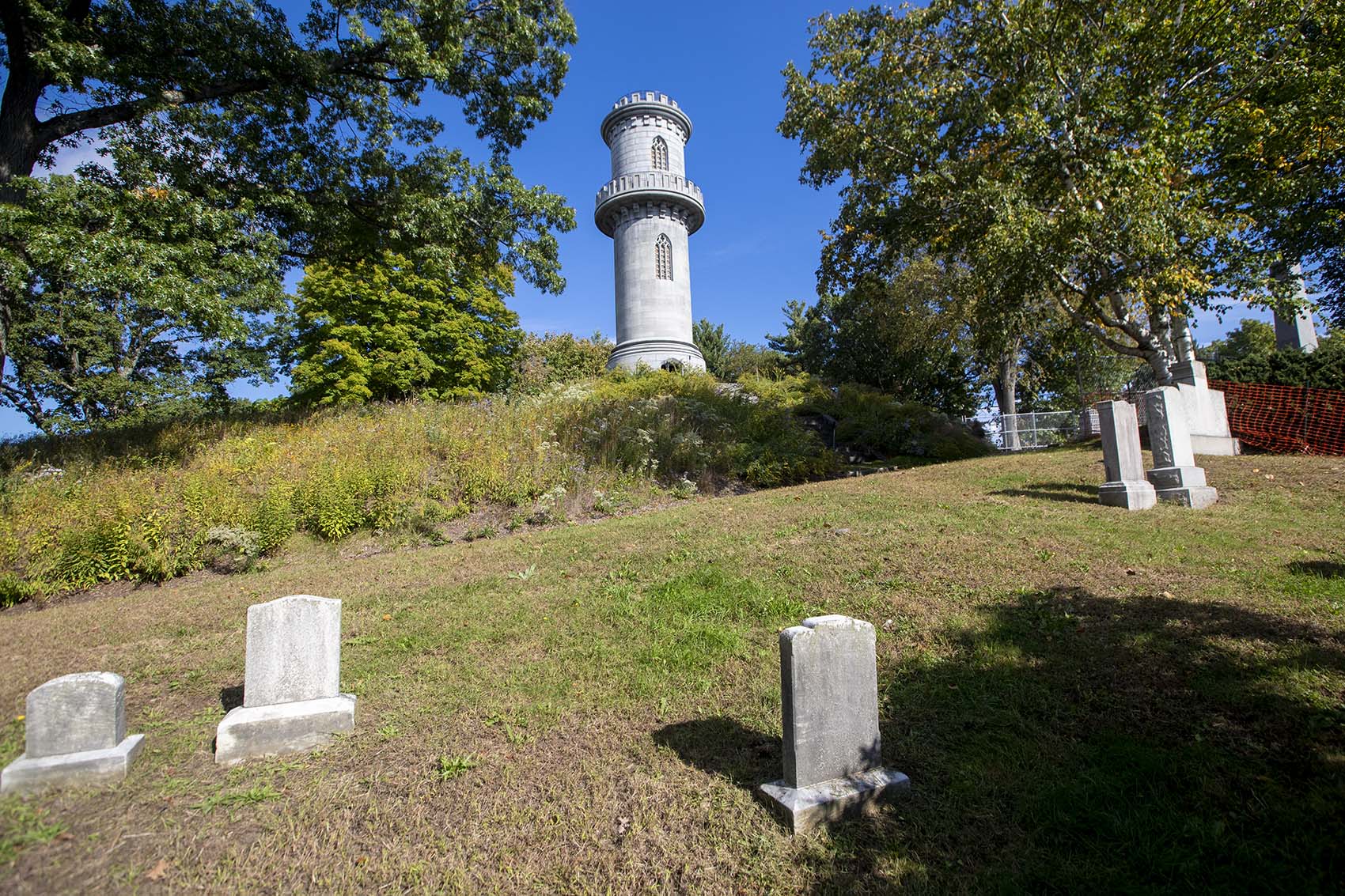Advertisement
Curious Boston
Yes, there is a 'Mount Auburn,' and here's how it got its name

There's Mount Auburn Cemetery. There's Mount Auburn Hospital. Mount Auburn Street. If you're anywhere in that particular section of Cambridge and Watertown, it's omnipresent, from day cares to neighborhood shops.
But what came first, and where did the name come from? One of our readers asked, "Where is Mount Auburn? We have a street and a hospital by that name, where's the mountain?"
Short answer: Yes, there is a Mount Auburn, it's in Mount Auburn Cemetery, and the creation of the cemetery is where the name came from.
Meg Winslow, curator of historical collections at the cemetery, says the impetus for the cemetery arose because Boston was running out of space to bury its dead.
In 1825, a man named Jacob Bigelow gathered a group of friends to begin looking for land to build a new cemetery. At the same time, Henry Dearborn, president of the brand-new Massachusetts Horticultural Society, was looking for space for an experimental garden.
The society, "a hip, young, enthusiastic society of horticulturists," says Winslow, joined forces with Bigelow and "their mutual dreams came true."
The idea was that the cemetery would sell burial plots, and the money from the sales would be used to fund an experimental garden. The land that became Mount Auburn Cemetery was sold to the society by George Watson Brimmer, who had bought it from the original owners, the Stone family, and the cemetery was officially consecrated on Sept. 24, 1831.
And the name was a nod to what locals already called the land, says Winslow.

Decades earlier, in the late 18th century, Harvard University students would often hang out there. They eventually began to nickname it "Sweet Auburn" from the poem "The Deserted Village" by Oliver Goldsmith.
The poem begins:
Sweet Auburn, loveliest village of the plain,
Where health and plenty cheared the labouring swain,
Where smiling spring its earliest visit paid,
And parting summer's lingering blooms delayed ...
When Bigelow and others were collaborating on the cemetery project, he wrote to his associate Edward Everett about a prospective name, moving it from "Sweet Auburn" to "Mount Auburn" as a reference to the small hills already present.
Everett responded:
Dear Sir,- I think Mount Auburn a good name. Necropolis, you know, was a name given to a similar establishment in Egypt. The Elysian Fields would be a very pretty name, open, however, perhaps, to the same objection as Sweet Auburn; which, by the way, does not strike me as a powerful objection. Use diminishes surprisingly all such associations, as seen in the case of several of the new towns in New York, such as Troy, Utica, &c.
The cemetery was designed carefully to emulate a natural landscape, says Winslow. "It was designed to look as though it wasn't designed," she says. Plants and footpaths are placed to seem natural, not artificial.
The original design was done by Bigelow and Dearborn, not Frederick Law Olmsted as many think, says Winslow. The accomplished landscape architect was only 9 years old at the time.
Mount Auburn Cemetery was the first large-scale designed landscape open to the public in the country, Winslow says, and tourists came from all over to look at it. They'd return home, demanding something like that for their town, says Winslow, giving way to copycat cemeteries around the country.
Much of the design echoes the classical period, especially ancient Rome, says Winslow. There are seven hills at the cemetery, just like the seven hills of Rome, and yes, one of them is the literal Mount Auburn. It's the tallest one, home to the Washington Tower. The names of the other hills aren't used much anymore, she says.

As time went on, the area became known as Mount Auburn, and the other names followed suit — the street, the hospital, etc. In fact, Winslow says that according to a 2005 report, Auburndale in Newton was also named after the cemetery.
The cemetery is still today landscaped to look natural and inviting. In fact, they're building a new garden now.
"It is an evolving landscape that's continually changing," Winslow says.
Correction: An earlier version of this article incorrectly stated the first name of Frederick Law Olmsted. We regret the error.
This article was originally published on November 01, 2018.
